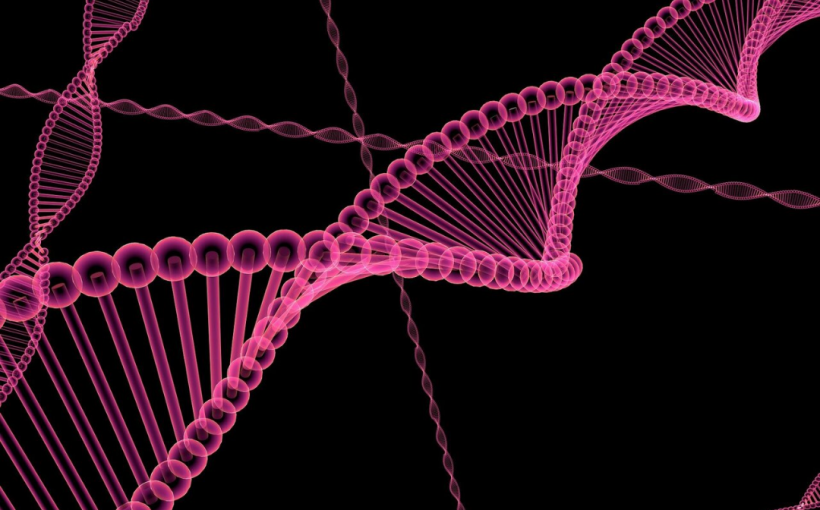One might think that the primary cause of most genetically linked diseases comes from mutations in coding DNA — alterations in coding regions of the genome that can lead directly to changes in the expression of particular proteins important for a healthy body. But the majority of human DNA is non-coding DNA — regions of DNA that do not directly translate into functional proteins. These non-coding DNA regions contain functional elements, called enhancers, which can change the likelihood of a particular protein to be made.
Researchers are now finding particular genetic variations in some of these non-coding regulatory regions, called enhancers, determine whether or not proteins are expressed in specific cell types in the brain and may play a role in a person’s risk of developing psychiatric or neurological conditions.
A team of researchers at University of California San Diego School of Medicine and the Salk Institute for Biological Studies used healthy tissue isolated from six patients to isolate four different kinds of brain cells — neurons, microglia, oligodendrocytes, and astrocytes — then looked at genetic variation associated with disease in the non-coding enhancer regions of each cell type, searching for variations that might be linked to disease risk.
Using novel molecular techniques, they were able to further map the connections between enhancer regions and their target genes, providing insights into how variations in enhancer regions can affect downstream gene expression in specific cell types.
“The brain is very complex, with lots of different cell types in different brain regions,” said co-first-author Inge Holtman, PhD, a postdoctoral fellow at UC San Diego School of Medicine Department of Cellular and Molecular Medicine. “Currently, our understanding of the regulatory landscape in the brain is largely unclear.
Past research has tried to generate a consensus regulatory landscape of the whole brain, but until now we didn’t really know what it looked like in individual cell types. This work gives us a much better understanding of how genes are being regulated, which enhancers are there, and which enhancers are looping back to particular genes and affecting their expression, in particular cell types in the brain.”
The findings showed that while many genes are expressed in many different cell types, the enhancer regions differ between cells — and that disease risk is often linked to specific enhancer regions in specific cell types.
“Focusing on genetic variation associated with Alzheimer’s disease (AD), we show preferential enrichment in disease risk variants in enhancers that are selectively active in microglia, the major immune cell in the brain,” said senior author Christopher Glass, MD, PhD, professor of cellular and molecular medicine and professor of medicine at UC San Diego School of Medicine. “This finding substantially extends prior studies linking microglia to late-onset Alzheimer’s disease.”
Beyond identifying genetic risk variants, the researchers validated their findings using pluripotent human stem cells. By targeting a particular enhancer region close to BIN1, a gene that has previously been linked to AD, they found that deleting that enhancer region led to a dramatic reduction in expression of BIN1 in microglia, but not in neurons or astrocytes, indicating that this BIN1-associated risk allele lies within a microglia-specific enhancer region.
“Often, it’s hard to know in what cell type particular genes are important because they’re expressed in all cell types in the brain,” said co-first-author Nicole Coufal, MD, PhD, assistant adjunct professor of pediatrics, UC San Diego School of Medicine. “In Alzheimer’s disease, it was previously assumed that BIN1 was most important in neurons, but this study indicates that it may actually be more important to understand the role of BIN1 in microglia.”
Researchers say their findings will help inform future studies investigating genetic risk variants in many different neurological conditions. “In the immediate future, this work gives new targets, and tells us which cells to study them in,” said co-first-author Alexi Nott, PhD, assistant project scientist in the Department of Cellular and Molecular Medicine at UC San Diego School of Medicine and a member of Glass’ lab. “Going forward, our data sets can be used by others interested in studying many different brain disorders.”
Nott said the research team plans to continue using the approach to generate even more targets of inquiry. “Because we studied healthy tissue, we may be missing some regulatory regions that are important in disease contexts. It may be that some of these elements are only altered in disease contexts. We also want to look at more cell types.
But this work is a great starting point for furthering our understanding of how these cell-specific regulatory regions may be important for understanding disease risk.”
Glass said the study represented a complex, massive team effort, with input from diverse scientists. “This breakthrough could not have been achieved without the application of a combination of multidisciplinary approaches and collaborative interactions involving neuroscientists, immunologists, stem cell biologists, geneticists, genomic scientists and neurosurgeons at UC San Diego, the Salk Institute and Rady Children’s Hospital,” he said.
“This is an exciting time in neuroscience because we are developing tools to understand the brain’s remarkable complexity in entirely new ways,” said co-author Fred “Rusty” Gage, PhD, professor and president of the Salk Institute. “The insights into brain health and disease gained from this study underscore the value of taking a multidisciplinary approach to biological research.”
UNIVERSITY OF CALIFORNIA – SAN DIEGO


